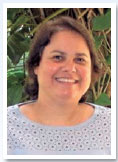Ricardo Noguera Louzada1,2,3; Ivar Vargas Belizario4; Mário Luiz Ribeiro Monteiro2; Fernanda Belga Ottoni Porto5; Milton Ruiz Alves2; Agma Juci Machado Traina2
DOI: 10.17545/eOftalmo/2023.0029
Currently, the use of imaging examinations is common in medical practice. Specifically in ophthalmology, these complementary examinations, performed in several devices with the purpose of acquiring images using different technologies and software, are extremely crucial in the investigation and follow-up of the most varied conditions. While some examinations are invasive and require the use of intravenous contrasts, others are noninvasive and, therefore widely used in clinical practice for the follow-up of diseases, making it possible to obtain images that can be static or dynamic, two-dimensional (2D), or three-dimensional (3D).
The first images obtained by retinal cameras were composed of cameras using manually developed film, and their optical system comprised lenses placed on the observation and capture plane, allowing direct visualization of the retina. Their analog acquisition system required large archives and longer examination times. The long wait after capturing the image with photographic films created anxiety about the results. In addition, it was impossible to assess the image quality before the film was developed.
With the introduction of digital technology, it was proposed that the exams use it, and retinography started using photosensitive sensors to capture the photons projected on the optical image and transform them into electrical signals, which are then digitized. This allows high-resolution retina images to be obtained and increasingly involves new technologies that improve image acquisition, storage, and software processing.
Every pixel of a captured digital image contains information that can be lost when changing its data structure. A pixel is a square pictorial element that is part of a matrix. In other words, it is the smallest 2D point of an image, whereas a voxel is the smallest 3D point of a digital image1.In addition to being three-dimensional, a voxel is also usually isotropic-that is, it indicates that what it represents is the same size in all dimensions. Thus, an isotropic voxel is a cube. A set of several voxels provides the basic formation of a 3D image.
Whenever any examination is exported, the original form of acquisition by the device must be preserved, so that it will be possible to access, reprocess, or even export the images to new multimodality evaluation software or submit them to specific algorithms afterward. Exporting an image to Portable Document Format (better known as PDF), for example, among other formats, is inappropriate and will compromise the image data irreversibly.
Optical coherence tomography allows visualization in multiple planes and enables analysis in different dimensions2,3. Its 3D acquisition provides volume information and other data that can be correlated with the device speed and scan analysis between scan times3,4. The new methods of image acquisition and processing are defined as the set of operations applied to an image to optimize the information, interpretation, and recognition of its elements or features that can be processed after acquisition.
Several imaging methods are available for the study of ophthalmologic alterations, allowing early identification of ultrastructural alterations that cannot be identified by conventional fundoscopic examination. This contributes to the early diagnosis of alterations and allows patients to be referred to timely and appropriate treatment. It facilitates early intervention in the pathological process inherent to the natural evolution of diseases, and their monitoring. A wide range of image processing algorithms, especially those using mathematical morphology functions, can be applied to increase the sensitivity of retinal imaging methods.
The future development of specialized software using the Web to view and export specific ophthalmological 2D or 3D images, including, for example, the use of HyperText Markup Language and libraries written in the JavaScript language, in addition to preserving the resolution, could provide medical images with portability and compatibility with various image processing algorithms and even with artificial intelligence (AI) systems5. General examples of this type of Web-based software are Cornerstone6 and the OHIF Medical Imaging Viewer7, both open-source software, the former being a development library and the latter a full Web-based software product.
It is important to remember the Brazilian General Data Protection Law (Law No. 13709/2018) and its focus on creating a legal security scenario with standardization of regulations and practices that are aimed at promoting the protection of personal data and must be updated according to constant changes in the digital world. At the same time, AI is becoming increasingly present in our routine, bringing technological innovations representing great advances and results and serving as a promising tool5. However, this widespread use of new tools opens the agenda for an extremely important topic: the rules and ethical uses of AI. It must be remembered that the Internet is not a lawless territory. Although Brazil does not yet have specific legislation for AI, its misuse and improper development can generate penalties, as in case of future use of image processing without the patient’s consent. For example, data leaks. Therefore it is important to highlight that there is still plenty of research challenges in the area of medical imaging supported by AI.
REFERENCES
1. Jacobs F, Sundermann E, De Sutter B, Christiaens M, Lemahieu I. A Fast Algorithm to Calculate the Exact Radiological Path Through a Pixel or Voxel Space. J Comput Inf Technol. 1998;6(1):89-94.
2. Cole ED, Moult EM, Dang S, Choi W, Ploner SB, Lee B, et al. The Definition, Rationale, and Effects of Thresholding in OCT Angiography. Ophthalmol Retina. 2017;1(5):435-447.
3. Louzada RN, Ferrara D, Novais EA, Moult E, Cole E, Lane M, et al. Analysis of Scleral Feeder Vessel in Myopic Choroidal Neovascularization Using Optical Coherence Tomography Angiography. Ophthalmic Surg Lasers Imaging Retina. 2016; 47(10):960-964.
4. Rebhun CB, Moult EM, Novais EA, Moreira-Neto C, Ploner SB, Louzada RN, et al. Polypoidal Choroidal Vasculopathy on Swept-Source Optical Coherence Tomography Angiography with Variable Interscan Time Analysis. Transl Vis Sci Technol. 2017;6(6):4.
5. Louzada RN, Belizario IV, Traina AJM, Alves MR. Importance of the algorithm as a tool for expert decision making [Editorial]: artificial intelligence in ophthalmology. eOftalmo. 2022;8(3):61-64.
6. Open Health Imaging Foundation, “Cornerstone”. https://github. com/cornerstonejs/cornerstone3D [online] 2023.
7. Ziegler E, Urban T, Brown D, Petts J, Pieper SD, Lewis R, et al. Open Health Imaging Foundation Viewer: An Extensible Open-Source Framework for Building Web-Based Imaging Applications to Support Cancer Research. JCO Clin Cancer Inform. 2020Apr:4:336-345.
AUTHORS INFORMATIONS





Funding: No specific financial support was available for this study.
Conflict of interest: None of the authors have any potential conflict of interest to disclose.
Received on:
October 10, 2023.
Accepted on:
October 16, 2023.